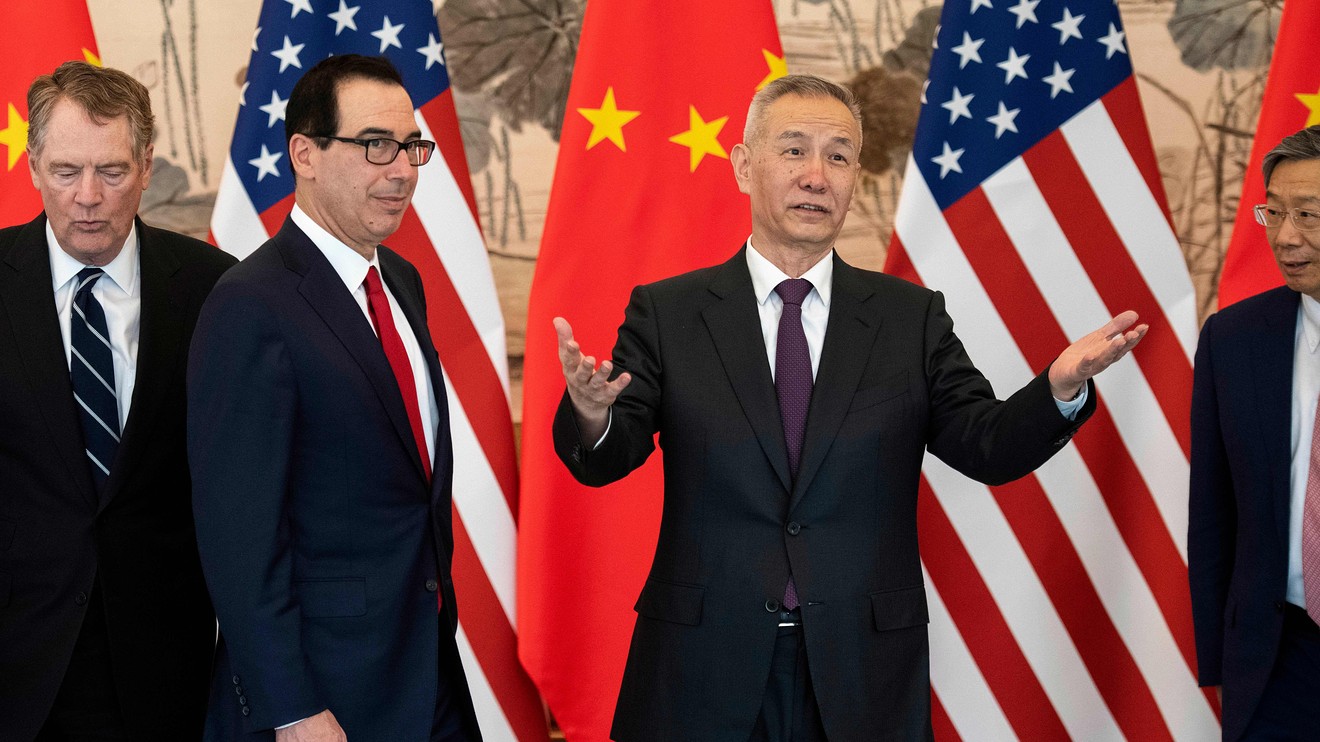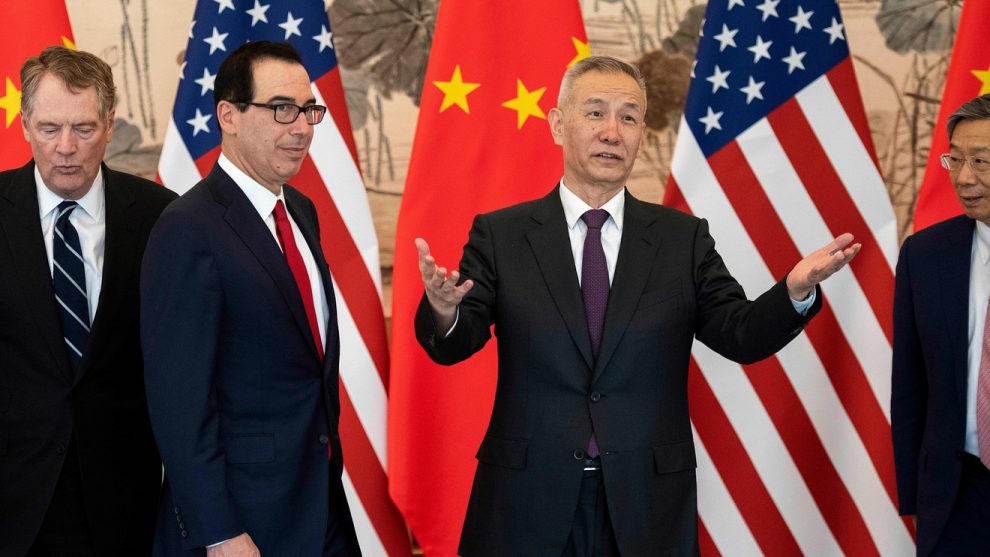
Wall Street was setting up for a tough start to the week on Monday, with Dow Jones Industrial Average futures down over 300 points as investors waited for countermeasures from China after trade talks with the U.S. appeared to end in a stalemate.
How did the benchmark indexes fare?
Dow futures YMM9, -1.20% fell 324 points, or 1.2%, to 25,641, while S&P 500 futures ES, +1.86% dropped 38.40 points, or 1.3%, to 2,848.25. Nasdaq-100 futures NQM9, -1.63% slid 120 points, or 1.6%, to 7,488.
On Friday, the Dow Jones Industrial Average DJIA, +0.44% rose 114.01 points, or 0.4%, to end at 25,942.37, recovering from a deficit of more than 350 points. The S&P 500 index SPX, +0.37% gained 0.4% to 2,881.40, while the Nasdaq Composite Index COMP, +0.08% climbed 0.1% to 7,916.94.
For the week, the Dow fell 2.1%, its biggest weekly loss since March. The S&P saw a 2.2% weekly fall and the Nasdaq shed 3%, the biggest losses for both since the week ending Dec. 21.
Read: Why the stock market is at the mercy of the U.S. consumer
What drove the market?
Trade tensions that drove volatility for stocks last week were rebooting Monday, as investors faced up to the fact that a deal between the U.S. and China could take longer than they expected. Talks in Washington ended with no agreement on Friday.
The Trump administration said it was ready to impose 25% tariffs on another $300 billion worth of Chinese goods, nearly all that country’s imports, after that duty was lifted to 10% as of Friday. Investors are now waiting for retaliatory measures from Beijing. The country’s chief negotiator, Vice Premier Liu He, has demanded tariffs on Chinese exports to the U.S. be lifted as a condition for striking a deal.
In several tweets over the weekend U.S. President Trump tweeted that the U.S. was in an advantageous position over trade, though White House economic adviser Larry Kudlow admitted Sunday that “both sides” will feel the pain. His comment that Trump and China’s President, Xi Jinping, may meet at the Group of 20 international conference in June failed to soothe investors.
A Sunday editorial in the Global Times, a daily Chinese tabloid newspaper published by the Communist Party, said the “fierce U.S. offensive is irrational,” and the idea that China cannot bear a trade war is “a fantasy and misjudgment.”
“China has been pushing forward the bilateral talks with a high sense of responsibility and maximized sincerity, but it will never yield to the extreme pressure from the U.S., or compromise on matters of principle,” said a Monday op-ed in The People’s Daily, an official newspaper of the Central Committee of the Communist Party
With no economic data on the calendar, investors were likely to keep the focus on those tensions. Boston Fed President Eric Rosengren and Fed Vice Chairman Richard Clarida were each set to speak at separate conferences on Monday, starting at around 9 a.m. Eastern Time.
What are strategists saying?
“Any goodwill to risk assets on Friday has faded through Asia, and there the preservation of capital is the overriding theme, although there is absolutely no panic,” said Chris Weston, head of research at Pepperstone.
“Protectionism and the impact that can have on demand can be hard to model, and it feels that with these dynamics in play the market will further de-risk, with traders wanting a return of their equity, as opposed to on their equity,” Weston added.
How are other assets trading?
Those trade tensions spread across Asia, where the Shanghai Composite SHCOMP, -1.21% fell 1.2% and other major indices logged losses of 1% or more. Europe followed suit with the Stoxx Europe 600 SXXP, -0.61% down 0.4%.
As investors backed out of equities, haven assets such as the Japanese yen got a bid, with the yen rising to ¥109.66 from ¥109.95 against the dollar DXY, +0.01% But gold GCM9, -0.30% slipped about 0.3%. Industrial metals were down across the board with copper HGN9, -1.08% off 1.2% to $2.740 a pound. Oil prices CLM9, +0.84% rose modestly.
Providing critical information for the U.S. trading day. Subscribe to MarketWatch’s free Need to Know newsletter. Sign up here.






